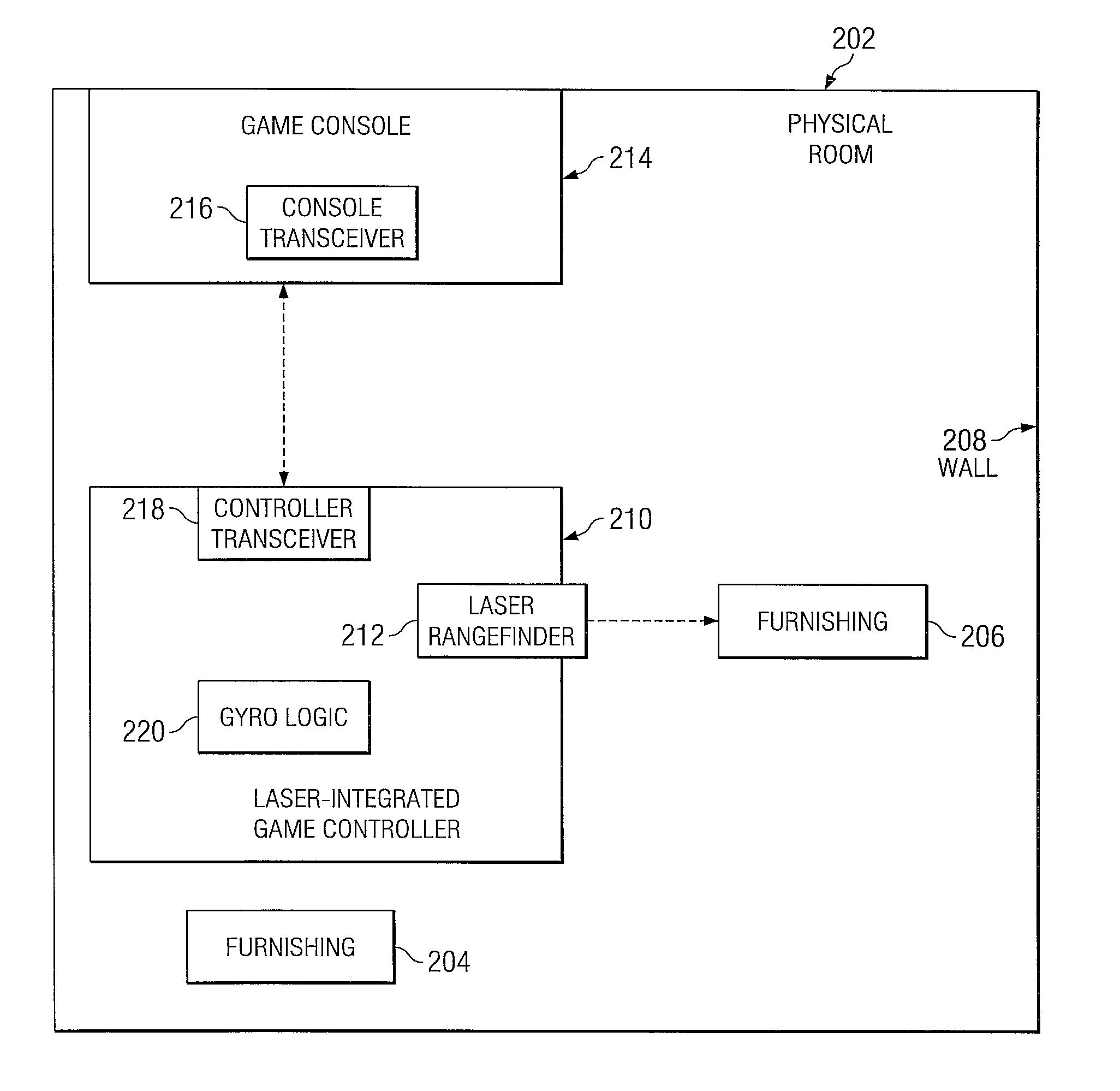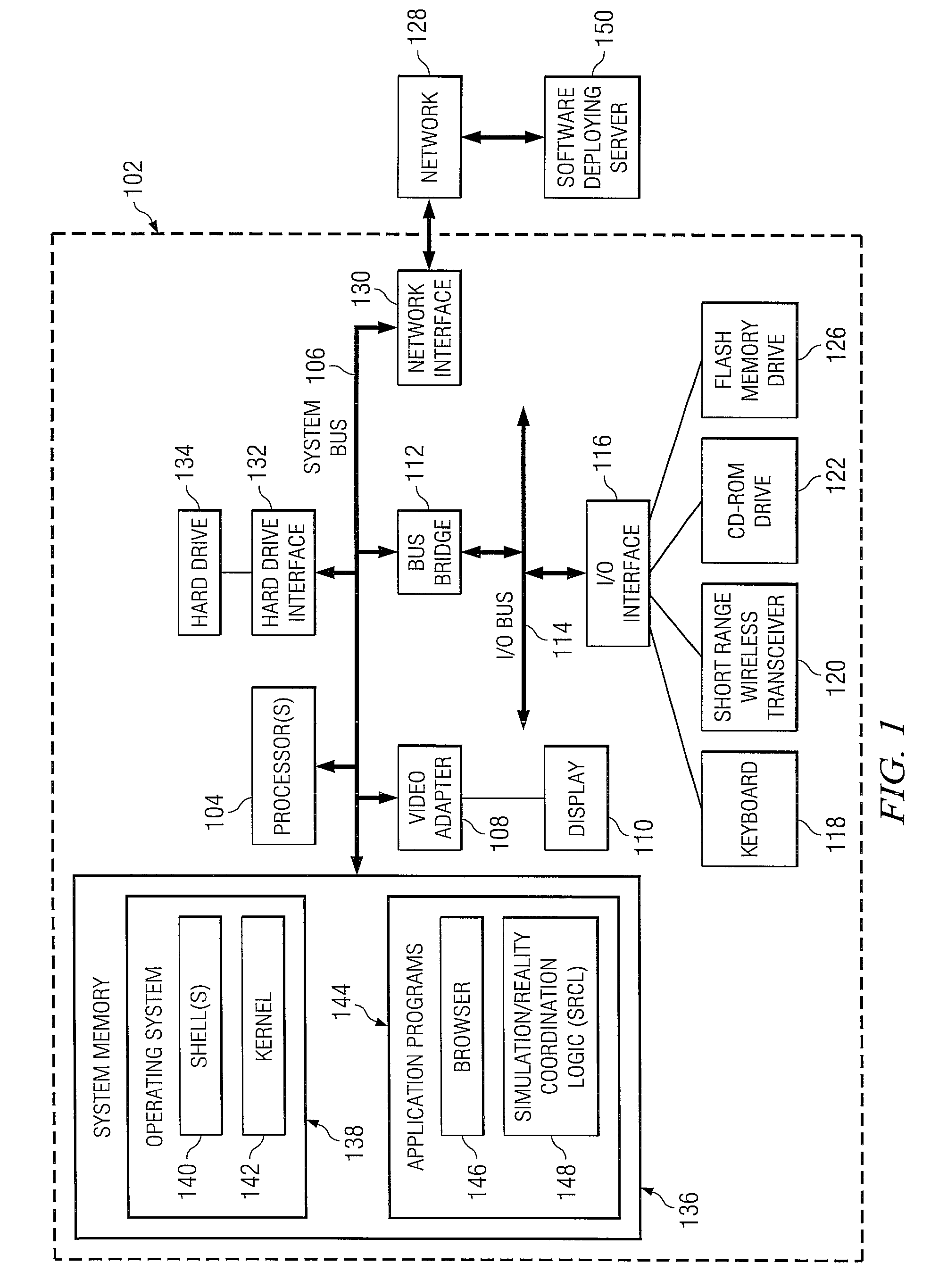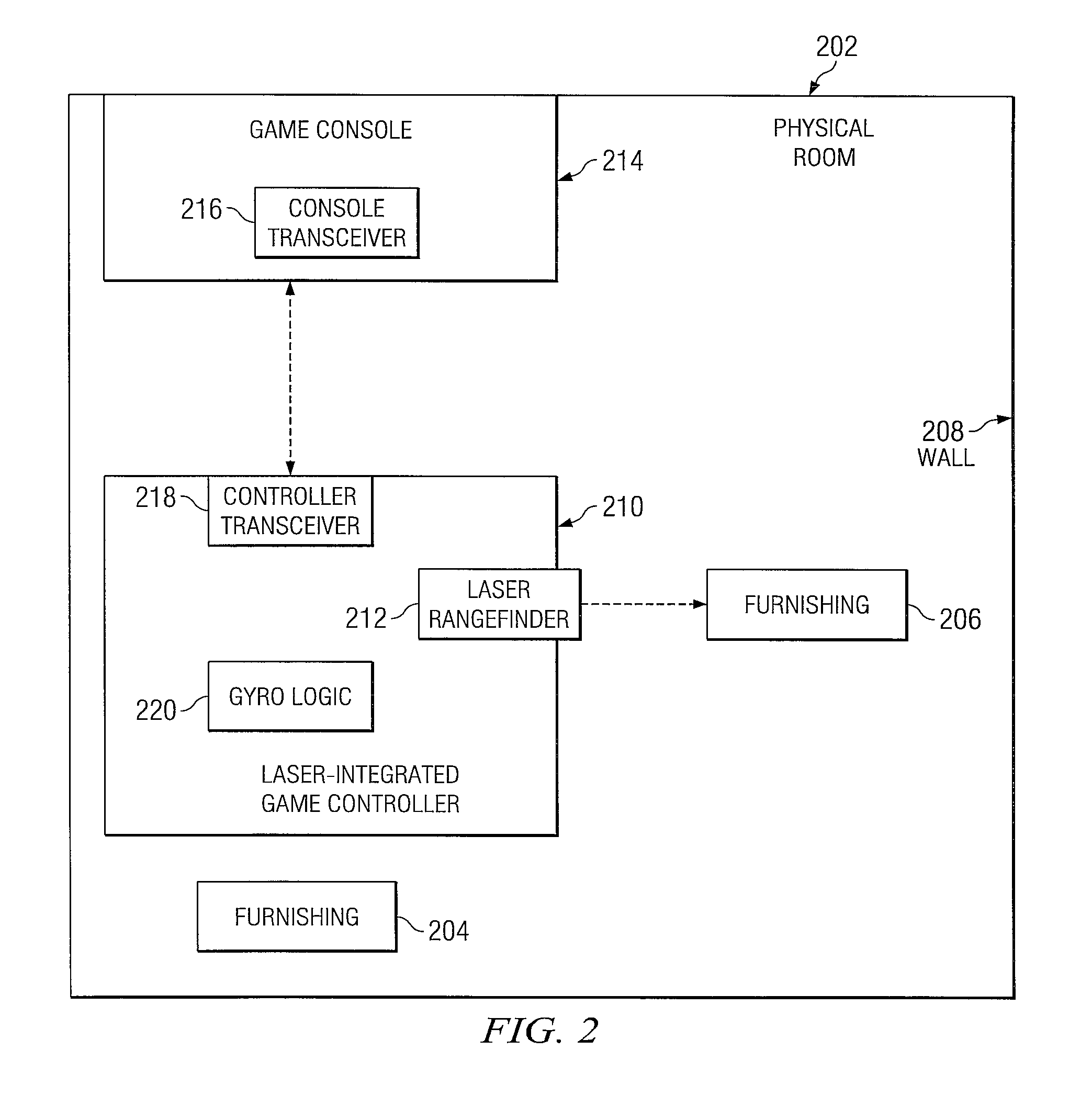Game controller spatial detection
- Summary
- Abstract
- Description
- Claims
- Application Information
AI Technical Summary
Problems solved by technology
Method used
Image
Examples
Embodiment Construction
[0012]With reference now to FIG. 1, there is depicted a block diagram of an exemplary computer 102 in which the present invention may be implemented. Some or all of the architecture shown for computer 102 may be utilized by a software deploying server 150 and / or a game controller 214 (shown below in FIG. 2). Computer 102 includes one or more processors 104 that are coupled to a system bus 106. A video adapter 108, which drives / supports a display 110, is also coupled to system bus 106. System bus 106 is coupled via a bus bridge 112 to an Input / Output (I / O) bus 114. An I / O interface 116 is coupled to I / O bus 114. I / O interface 116 affords communication with various I / O devices, including a keyboard 118, a Short Range Wireless Transceiver 120, a Compact Disk-Read Only Memory (CD-ROM) drive 122, and a flash drive memory 126. Keyboard 118 may be a standard keyboard (e.g., QWERTY style or similar), or a condensed alphanumeric keypad. The format of the ports connected to I / O interface 116 ...
PUM
 Login to View More
Login to View More Abstract
Description
Claims
Application Information
 Login to View More
Login to View More - R&D
- Intellectual Property
- Life Sciences
- Materials
- Tech Scout
- Unparalleled Data Quality
- Higher Quality Content
- 60% Fewer Hallucinations
Browse by: Latest US Patents, China's latest patents, Technical Efficacy Thesaurus, Application Domain, Technology Topic, Popular Technical Reports.
© 2025 PatSnap. All rights reserved.Legal|Privacy policy|Modern Slavery Act Transparency Statement|Sitemap|About US| Contact US: help@patsnap.com



